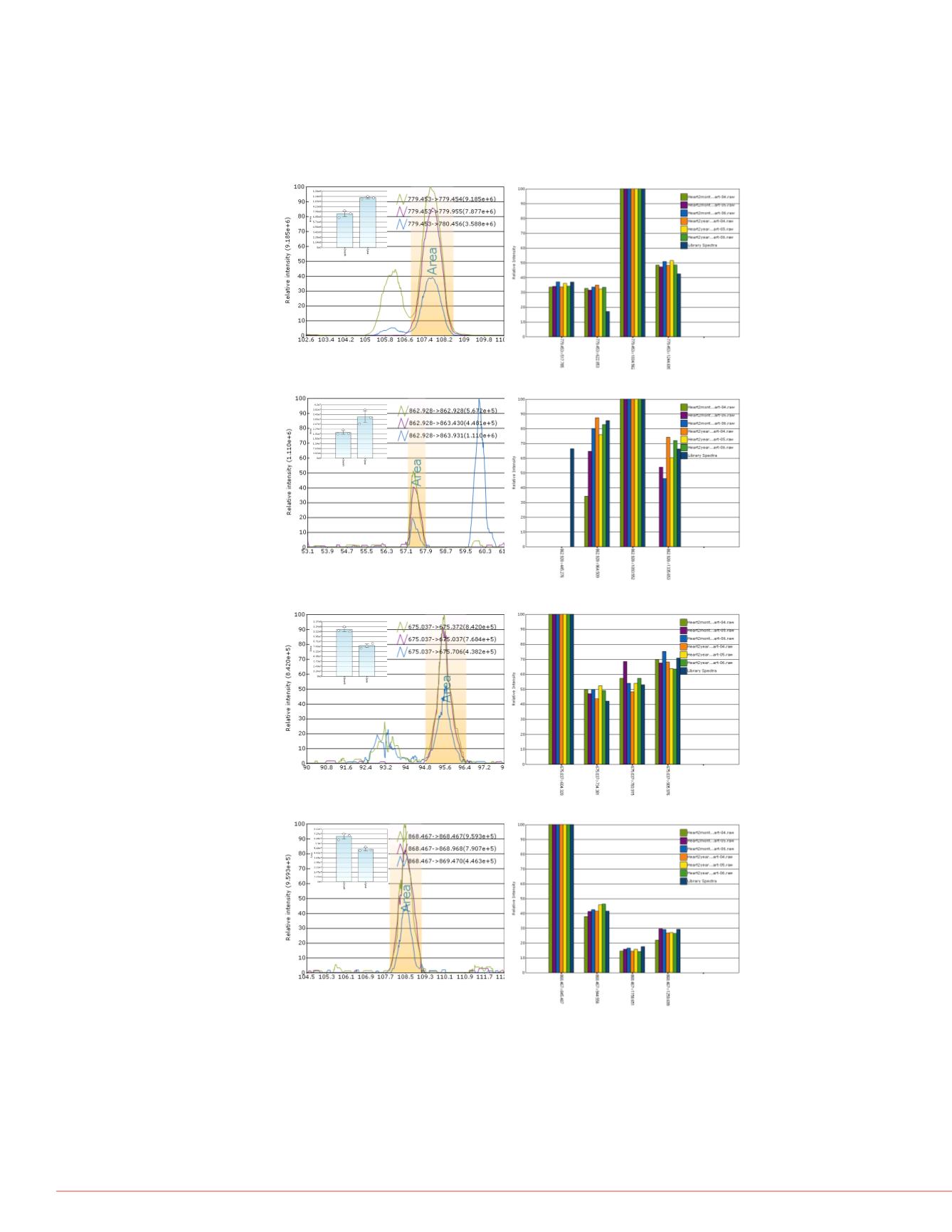

4
Characterizing Qualitative and Quantitative Global Changes in the Aging Heart Using pSMART, a Novel Acquisition Method
h with high resolution accurate
This novel acquisition method
by the loop count for 5 Da DIA
MS spectrum. By decoupling
a DIA) the method leverages the
d the user-defined 5 Da DIA
pecific DIA window over all
g pSMART. Our workflow is a two-
bal differential analysis. The
cquisition and sequencing is used
for the mouse heart tissue.
RT and all data are processed in
ing retention time, precursor and
t from Crystal for automated data
FIGURE 4. Advantage of
confirmation of MS1 quan
peptides. B and D are the
for the highlighted peaks
relatively close in a 3 hou
choose the correct MS1p
provided by pSMART. Th
peptide GDP[Hydroxyl]G
This workflow has severa
Narrower acquisition win
precursor isolation window i
performance.
Increased selectivity resu
Using a hybrid of DDA an
the many MS/MS fragment
This workflow is only pos
provided by the Fusion MS
Orbitrap instruments.
The benefits of the pSMART
characterization compared to
quantitative from qualitative
and high charge densities of
acquisition methods facilitate
quantification. Figure 4 sho
resolved but have similar pre
HR/AM MS coupled to a seri
increased confidence in the
DIA window containing the pr
retention time at 16.4 minute
correct product ion distributio
FIGURE3. Quantitative differences in cardiac peptides discovered with pSMART.
Relative abundance changes in peptides with age, measured using the MS1
peak areas (DDA)(A,C,E,G) with confirmation of peptide ID using MS/MS
composite spectra (DIA) (B,D,F,H ). Insets, show the relative areas for young
and old in the triplicate data.
AnnexinA1 [Mus musculus] - FLENQEQEYVQAVK
Vimentin [Mus musculus] - ISLPLPTFSSLNLR
ApolipoproteinA-IV precursor [Mus musculus] - LVPFVVQLSGHLAQETER
Heat shock 70 kDa protein 4 [Mus musculus] - EFSITDVVPYPISLR
A
B
D
C
E
G
H
F
A
C



















